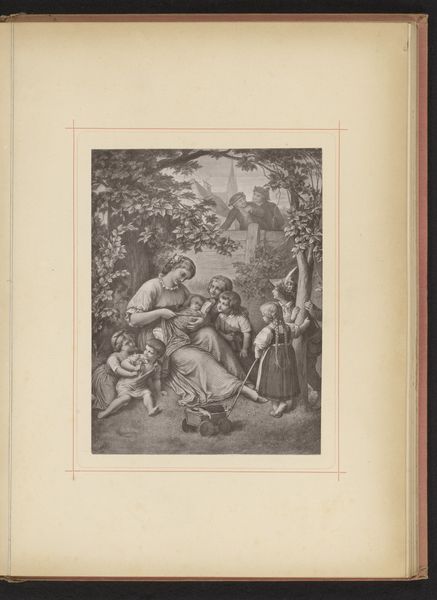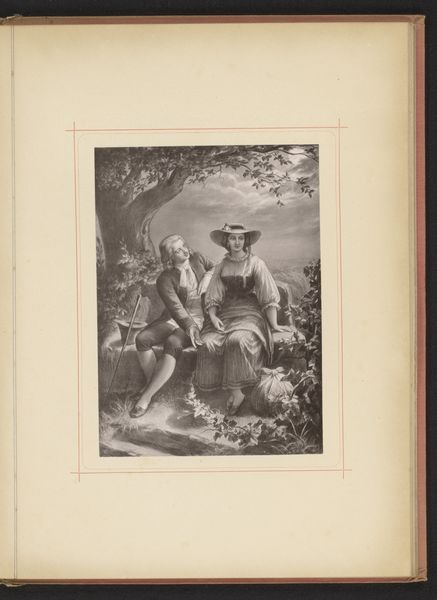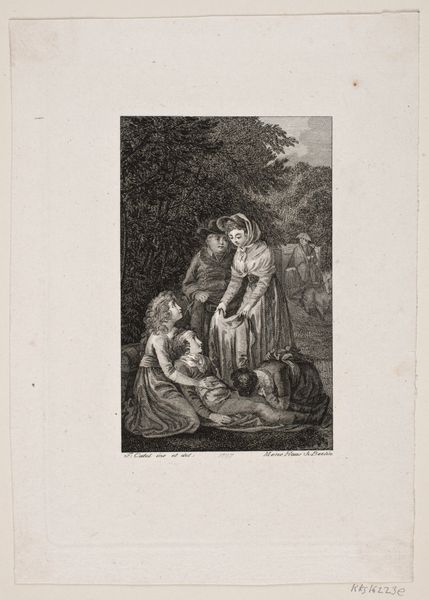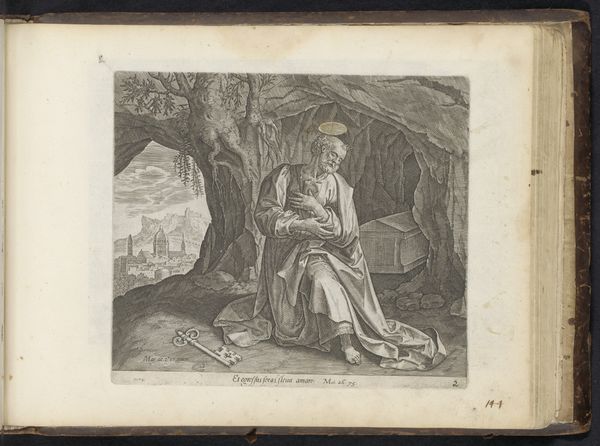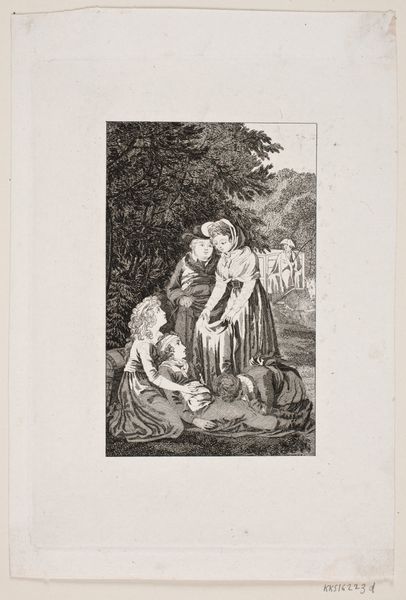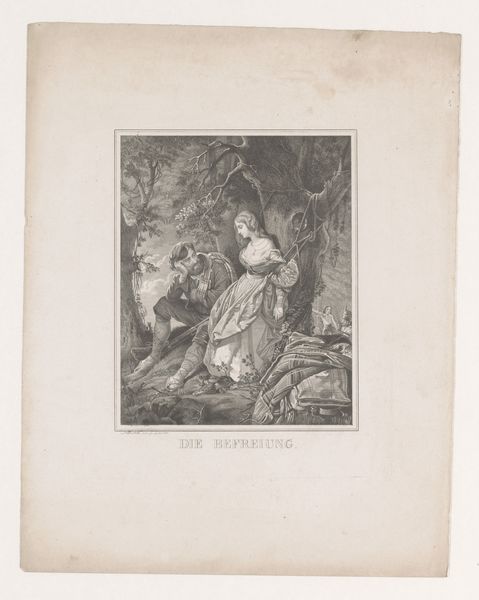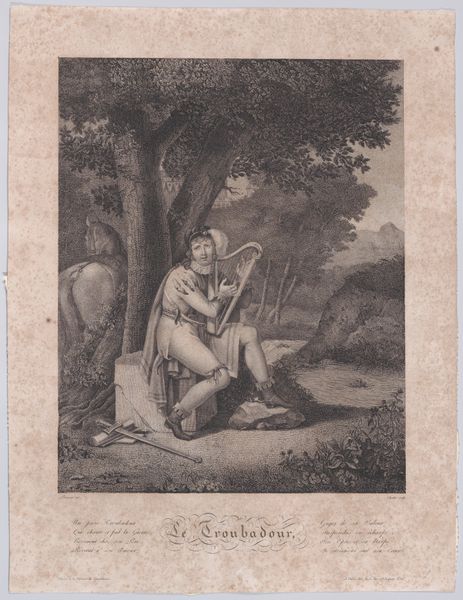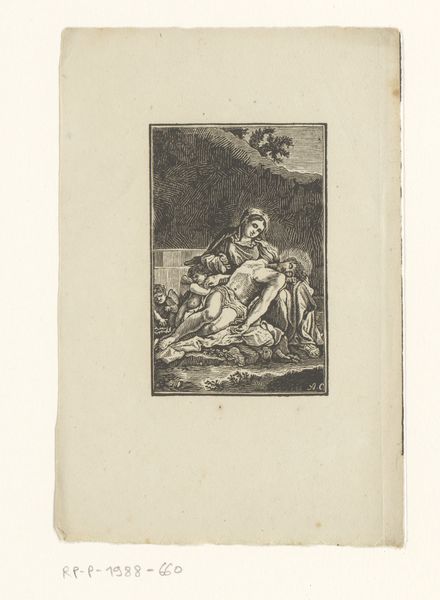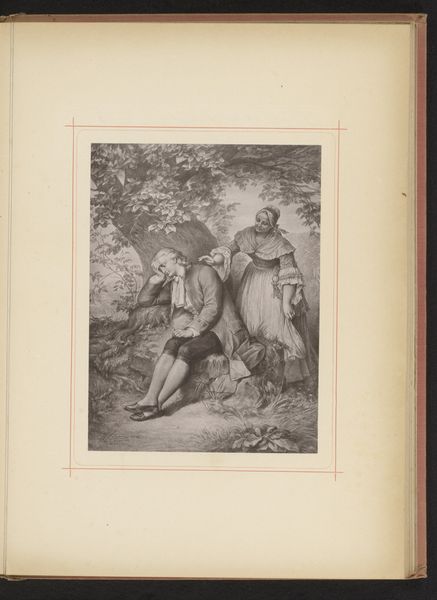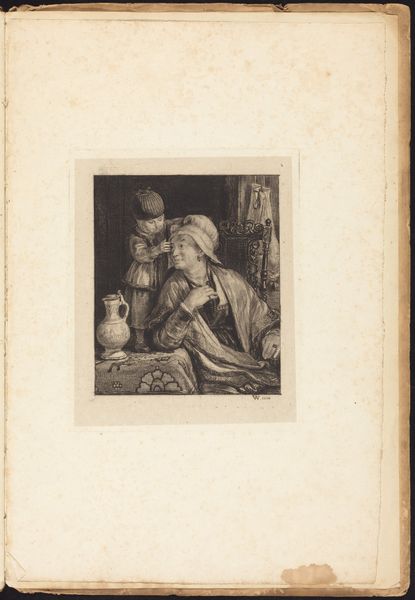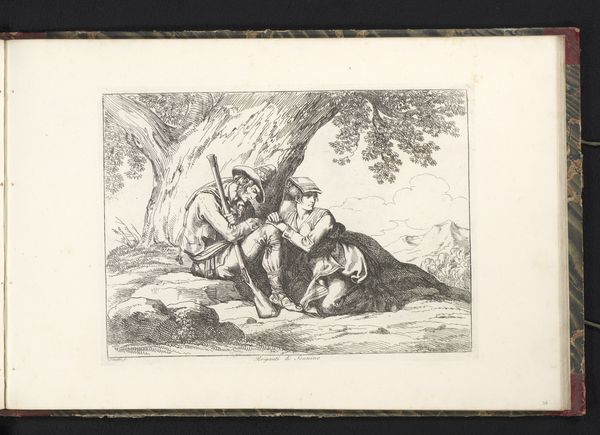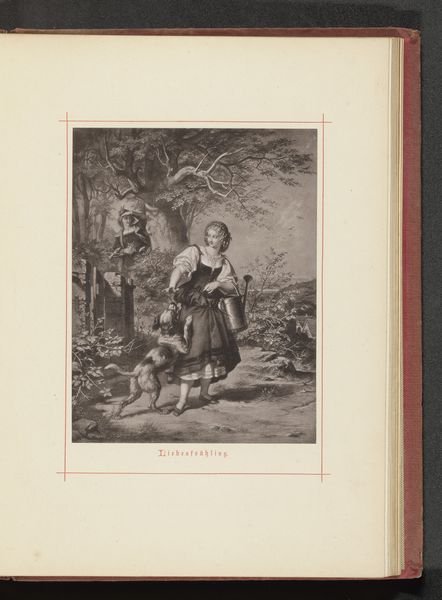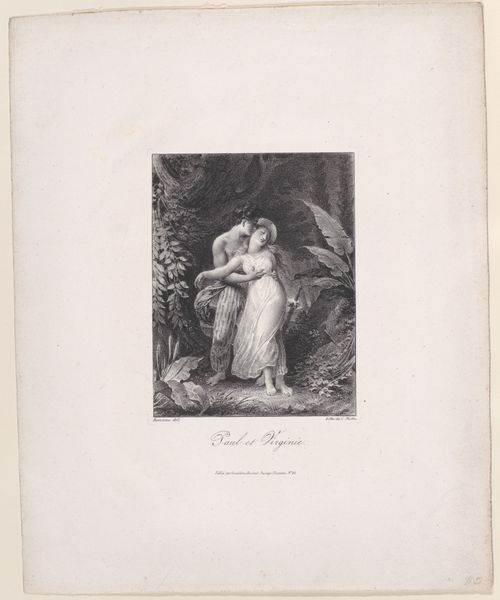
Reproductie van een tekening, voorstellende Herman en Dorothea bij een waterput before 1885
0:00
0:00
drawing, print, etching, paper, graphite
#
drawing
# print
#
etching
#
landscape
#
paper
#
coloured pencil
#
graphite
#
genre-painting
#
watercolor
#
realism
Dimensions: height 165 mm, width 124 mm
Copyright: Rijks Museum: Open Domain
Editor: Here we have an etching, dating to before 1885, titled "Reproductie van een tekening, voorstellende Herman en Dorothea bij een waterput" - or "Reproduction of a drawing, depicting Herman and Dorothea at a well." The image portrays two figures beside a wellspring in a lush, idealized landscape. What strikes me is the deliberate attention to the material elements - the water, the stone, the way the clothing drapes. What stands out to you? Curator: It's interesting you point out the materiality. For me, it begins with the production of this "reproduction." It's not simply about the depicted subject, but the labor embedded within its creation. Think about the etcher's skill translating an original drawing, the choices made regarding line weight and shading, the printing process itself and the use of graphite, colored pencil, and watercolor, to create something available to a wider market. How does this reproductive process democratize art consumption? Editor: That's a great point! I hadn’t considered the economic accessibility offered by prints like these. Does that elevation of reproduction alter the value of the artwork itself? Curator: Absolutely. It challenges notions of originality and authorship. By understanding the social and economic factors driving its creation and consumption, we can begin to see how it functions within a broader network of material exchange. The subject becomes secondary to how this print circulated, impacting how people conceived ideas about pastoral life, and artistic skill through replicated form. Editor: So, instead of focusing on the story or the people, we should investigate how the print’s material existence shaped its role in society? Curator: Precisely! This is what I mean by a materialist perspective. We are acknowledging the artistic skill by recognizing that technique influences the subject and the cultural moment. Editor: That's incredibly insightful. I hadn't thought about art in those terms before. Thanks for helping me shift my perspective. Curator: And thank you for prompting that shift with your own observations on materiality. I’m struck anew with how social context shapes aesthetic appreciation.
Comments
No comments
Be the first to comment and join the conversation on the ultimate creative platform.
